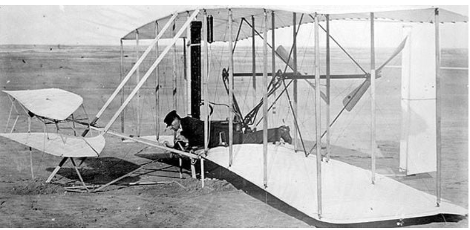Article 2. Units of Measure
Synopsis: Whenever physical measurements are made or equations are used to determine performance metrics, it is imperative to use appropriate reference units of measure such that the results are dimensionally correct and the results make physical sense. The units of measure commonly used in the US are based on the US Customary system, which shares developmental roots with the British Imperial system, with units in both systems being of ancient Roman decent in many instances. It is therefore not surprising given the long history of development of the longbow in England and the more recent development of the compound bow in the US that use of these British-Influenced measurement systems persist in the sport of Archery. In this article we will review the US Customary system of units as it relates to the sport of Archery and provide sample calculations to facilitate proper use of the units when performing measurements and subsequent calculations. Particular focus is given to the correct interpretation and use of the pound unit which can describe either force or mass and therefore can be a point of confusion for many archers.
Before we dive into the science of arrow flight, we would do well to start off by establishing a firm foundation of how to quantify the physical values and performance metrics that we wish to measure or calculate. It would make no sense to describe an arrow shaft as 30 long for instance without appending some standard unit of measure to the number in order to quantify it. A “unit of measure” is an accepted standard[1] that facilitates comparison between an unknown quantity and a known standard reference quantity. For example, if we measure the length of an arrow shaft in inches, we would know what that length is because the “inch” unit is a defined standard reference length. Of course there are multiple standard units of measure for length such as feet, yards, centimeters, etc. that we could have chosen to describe the length of the arrow shaft. In general utilizing known reference standards allows us to
- Easily quantify the physical characteristics of an object,
- Add universally understandable meaning to the measurement, and
- Facilitate conversion from one unit of measure to another.
The problem is that US Customary units, unlike units of the Metric System, are a hodgepodge of units that are not systematic multiples of each other, and the names of the units are not interrelated. Table 1 highlights some comparisons between the two systems. Although length units are illustrated, mass and volume units have similar disparities. Notice in particular that unit prefixes in the Metric System (Kilo=1000, Centi=100, Milli=1/1000, Micro=1/100000) signify the multipliers of the base unit (Meter). There’s no such consistency in the US Customary units.

Many people feel that the Metric System is the better system because of its consistency and its worldwide adoption as the standard system of measurement (Ref. 2). However, given the centuries of history of the bow and arrow in England (Ref. 3) and that fact that US Customary units were derived from the British Imperial System of units, it’s not hard to understand why the sport of Archery has traditionally used these units. Hence going forward, we will focus on using US Customary units for our examples and calculations (except for one small foray into the British Gravitational System of units, which we will discuss next).
So far, we have established the need for units, and discussed the standard units that we will be using. Next we must address an apparent inconsistency issue with US Customary units and show by example how we can easily navigate around the issue. By far, the unit in the US Customary system that trips people up the most is the “pound” unit. That’s because the “pound” unit can describe either a unit of force or a unit of mass. Let’s dive into this a bit because in archery, almost every performance metric we want to quantify involves either force or mass, or both.
Even though the “pound” unit name is the same for both force and for mass, the quantity being measured is not the same and they cannot be directly set equal to each other. An object will have the same mass whether it’s located on the Moon or on the Earth. But its weight (a force) will be different at those two locations because the gravitational attraction of the object on the Earth is different (stronger) than the gravitational attraction acting on the same object on the Moon. To alleviate (or add to) the confusion, scientists have come up with more descriptive names to clutter up the unit. If a “pound” describes a unit of force, the name “pound force” (abbreviated as lbf) is used. If a “pound” is to describe a unit of mass, the name “pound mass” (abbreviated as lbm or confusingly, just lb in most common literature) is used. A pound force is not the same thing as a pound mass. The confusion is a long standing one even among engineers. For background, Ref. 1 provides a short historical perspective for the interested reader of how our systems of units have developed over the centuries.
To elaborate, when we weigh an arrow on a digital scale, the scale can only measure weight (not mass), but it is calibrated to automatically give you the answer in units of mass. When you weigh a “450 grain” arrow, the display will show 450 grains (a unit of mass) because the scale reads the weight (the force of gravity pulling down on the arrow’s mass), and an internal program inside the scale converts that reading into the equivalent mass for the amount of gravitational force that’s measured. If you took that same arrow, and the same digital scale to the Moon without recalibrating it and weigh the arrow there, the scale would not correctly display the arrow mass in grains even though we know that mass is the same regardless of whether the arrow is on the Moon or on Earth. Perhaps an even clearer example would be if you just used your finger to push down on the scale. Obviously the scale is not measuring the mass of your finger, even though its display is showing units of mass (such as grains). The scale is measuring force and translating it to mass units. Similarly if the scale has the option of displaying in terms of pounds, those units will most likely be in pounds mass and not pounds force. Adding to the confusion is that the pound mass unit is often displayed on the scale as merely “lb” and not “lbm“, because by definition (Ref. 1) the symbol “lb” without a subscript means pounds mass.
Let’s examine a common calculation to show how a person could get in a bind using pounds mass as a unit of measure.
PROBLEM STATEMENT: Calculate the kinetic energy of an arrow whose mass is 450 grains just after it flies through the chronograph screens positioned close to the bow. The chronograph reads the velocity as 300 ft/sec.
Express your answer in units of ft lbf (ironically, commonly called foot pounds when spoken).
SOLUTION ATTEMPT:
- Weigh the arrow on a scale: 450 grains
- Convert the 450 grains to units of lbm :

- Plug the mass and velocity values into the equation for kinetic energy:

While this answer is technically correct, it does not match the units of ft·lbf that we commonly associate with kinetic energy. The calculation is incomplete as it stands, and without more information, we are stuck with an answer we have calculated that we can’t do much with.
I’ll confess that during my first three years as a college student, I did not understand how to finish calculating the kinetic energy of a body in motion. Whatever my profs were teaching involving some obscure gravitational constant term gc that was incorporated into the equations to make the numbers come out right didn’t register with me. So I just calculated everything in Metric units like every other engineering student was taught to do. At that time in the US (1980s), there was a big government push to try to convert over to the Metric System, so the Profs just tended to skip over US Customary units with a bit of hand waiving anyway. Unfortunately by doing so, a lot of misunderstanding of (and a lack of respect for) the US Customary system was inadvertently ingrained into the minds of engineering students of my generation.[2] My guess is that this situation is even worse today on most US college campuses. Contrary to my education, I found great value throughout my career in being able to use both the Metric system and the US Customary system interchangeably. In particular, among the respected old-timers that I worked with over the years, almost none of them used the Metric system, and they tended to call out young engineers who used only the Metric system because there was a lack of what they would call “intuition” involved. The old timers instinctively knew what an inch looked like, how much a pound of mass weighed, or how fast 60 miles/hr was. The young engineers would correctly report their results in millimeters, Newtons, and kilometers/hr because it was easy to do so, but they did not have a feel for what those numbers represented. In other words, students knew the Metric system by rote memorization, but had no intuition about what the units represented or how to convert to units that the old-timers historically used and had a feel for. In essence, they were correctly speaking a language, but they were not speaking the correct language for the situation at hand. I believe this is the essence of the costly mistake described in footnote 2 above.
Speaking of old timers and their experience, one day at the start of my 4th year of college, the assistant prof, a Brigadier General Richard Drury (Ret’d)[3] strolled up to the chalk board and drew the following diagram as shown in Fig. 1. It was a revelation that I still recall some 40 years later:

On the far left of the chalk board he drew a very small box. He pointed to it and said, “This is a grain.[4]” Then he drew a bigger box next to it and said, “This is a pound mass. There are 7000 grains in pound mass.” And finally he drew a larger box next to the second one, and said, “This is a slug. There are 32.174 pounds mass in a slug. The units of a slug are pounds force seconds squared per foot.” I don’t recall ever hearing of a slug before that day except for the snail-without-a-shell variety. It turns out that a slug is a derived unit of mass in the British Gravitation System (Ref. 5), and it is defined as that quantity of mass that is accelerated to 1 ft/s2 when a net force of one pound force (lbf) is exerted on it. That quantity of mass turns out to be 32.174 Ibm. The slug is a derived unit of mass that comes from Newton’s second law of motion. We will talk a lot more about Newton’s second law in future articles so that we don’t digress too much here. For now let’s return to the goal of calculating the kinetic energy of our arrow and see how using the slug as a unit of mass can help us do that. Let’s start with the same problem statement as before:
PROBLEM STATEMENT: Calculate the kinetic energy of an arrow whose mass is 450 grains at the point it flies through the chronograph screens positioned close to the bow. The chronograph reads the velocity as 300 ft/sec.
Express your answer in units of ft lbf.
SOLUTION:
- Weigh the arrow on a scale: 450 grains
- Convert the 450 grains to lbm and then to slugs (shown in blue):

- Plug the mass and velocity values into the equation for kinetic energy:

When we use slugs rather than lbm as the mass unit, the calculation will automatically be of the final form we desire without a separate conversion constant since the slug unit inherently expresses the relationship between pounds mass and pounds force. Think of the lbm unit as a gateway between grains and slugs and always convert any mass measurement from grains to slugs. Pretty soon, you will get used to automatically dividing the mass in grains by 7000 and then again by 32.174 to end up with units of lbf s2/ft. I find it easier to remember the two step conversion values rather than simply trying to divide the number of grains by the product of 32.174*7000=225218, because mentally it helps me remember the meaning behind each conversion step, just as outlined by Mr. Drury in Fig. 1.
Let’s look at another example:
PROBLEM STATEMENT: How much does 1 lbm nominally weigh[5] on Earth?
SOLUTION: We know from Newton’s 2nd Law that the weight of an object is equal to its mass multiplied by the Earth’s local gravitational acceleration (Ref. 7) that is acting upon that mass. If we just want to use a nominal constant value for the gravitational acceleration, we can represent that by g0. In equation form this can be expressed as:

where brackets have been placed around the mass symbol above to delineate where the conversion from 1bm to slugs occurs in the formula below. Therefore

Note that this DOES NOT say that 1lbf = 1lbm. What it does say is that 1lbf =1lbm X 32.174 ft/s2 on Earth. Why does the value 32.174 appear twice in this equation? Recall that the slug unit is defined as that amount of mass that is accelerated to 1 ft/s2 when a net force of one pound force (lbf) is exerted on it. That amount of mass turns out to be 32.174 lbm and this value appearing inside the brackets does not change with location. However, the value 32.174 that is outside of the brackets is the nominal acceleration due to gravity on Earth, and this term does vary with location. If we wanted to calculate the weight of an object on the Moon having a mass of 1 lbm for instance, it is this value outside of the brackets that would need to change. In fact let’s do just that and see what we get. The standard acceleration due to gravity at the surface of the Moon (Ref. 8) is g0=5.309 ft/s2. Therefore we can determine that the weight of 1 lbm on the surface of the moon is:

So the weight of 1 lbm on Earth is 1 lbf, but the weight of 1 lbm on the Moon is .165 lbf, which is approximately six times less.
As a final topic, let’s put together a simple table of units that are commonly used in Archery. Table 2 lists units for Length, Mass, Force, and Time that we will be using in future articles. We will refer back to this table as necessary to avoid redefining the units each time we want to use them.

In summary, by historical precedence the engineering units commonly used in archery in the US at the present time are the US Customary units, with the addition of the slug as defined as a unit of mass in the British Gravitational System. The focus of this particular article was to help clarify the difference between the pound unit when used to describe a force, versus the pound unit when used to describe a mass. Calculations were then used to illustrate a method of mass-units conversion from grains to slugs by utilizing the pounds mass unit only as a stepping stone in the process. Future articles will rely upon this conversion process to quantify arrow behavior at launch, in flight, and during penetration.
References
- https://en.wikipedia.org/wiki/Imperial_and_US_customary_measurement_systems
- https://www.historic-uk.com/HistoryUK/HistoryofEngland/The-Longbow/
- https://www.nist.gov/blogs/taking-measure/busting-myths-about-metric-system
- https://en.wikipedia.org/wiki/Grain_(unit)
- https://en.wikipedia.org/wiki/Foot%E2%80%93pound%E2%80%93second_system_of_units#British_gravitational_system
- https://www.discovery.com/science/weigh-on-earth
- https://en.wikipedia.org/wiki/Standard_gravity
- https://nssdc.gsfc.nasa.gov/planetary/factsheet/moonfact.html
- https://web.aeromech.usyd.edu.au/statics/units.htm
[1] Units tend to grow more precise in definition with advancing technology. See Ref. 1, for example.
[2] A particularly costly mistake (>$500M) of unit conversion error between US Customary unit and the Metric System made by US engineers of my generation : https://en.wikipedia.org/wiki/Mars_Climate_Orbiter
[3] He always had students refer to him as just “Mr. Drury”. I had no idea of his true background until writing this article. https://www.af.mil/About-Us/Biographies/Display/Article/107214/brigadier-general-richard-t-drury/
[4] A very old reference unit of mass, which was quantified by the weight of 1 grain of barley. See Ref. 4.
[5] Weight varies slightly with location on Earth. See Ref. 6.
[6] At least one reference states that the slug is the base unit in the US Customary system. For example see Ref. 9.








I’m very interested in the explanation of how KE is only a unit of potential & Slugs are a unit of ability. While speed is sexy the difference of 1/2 a slug is tremendous. Until we understand Slugs we can not begin to peel back the layers of resistance created by broadhead profiles, angle of slip, & ferrule designs.
Leave a comment